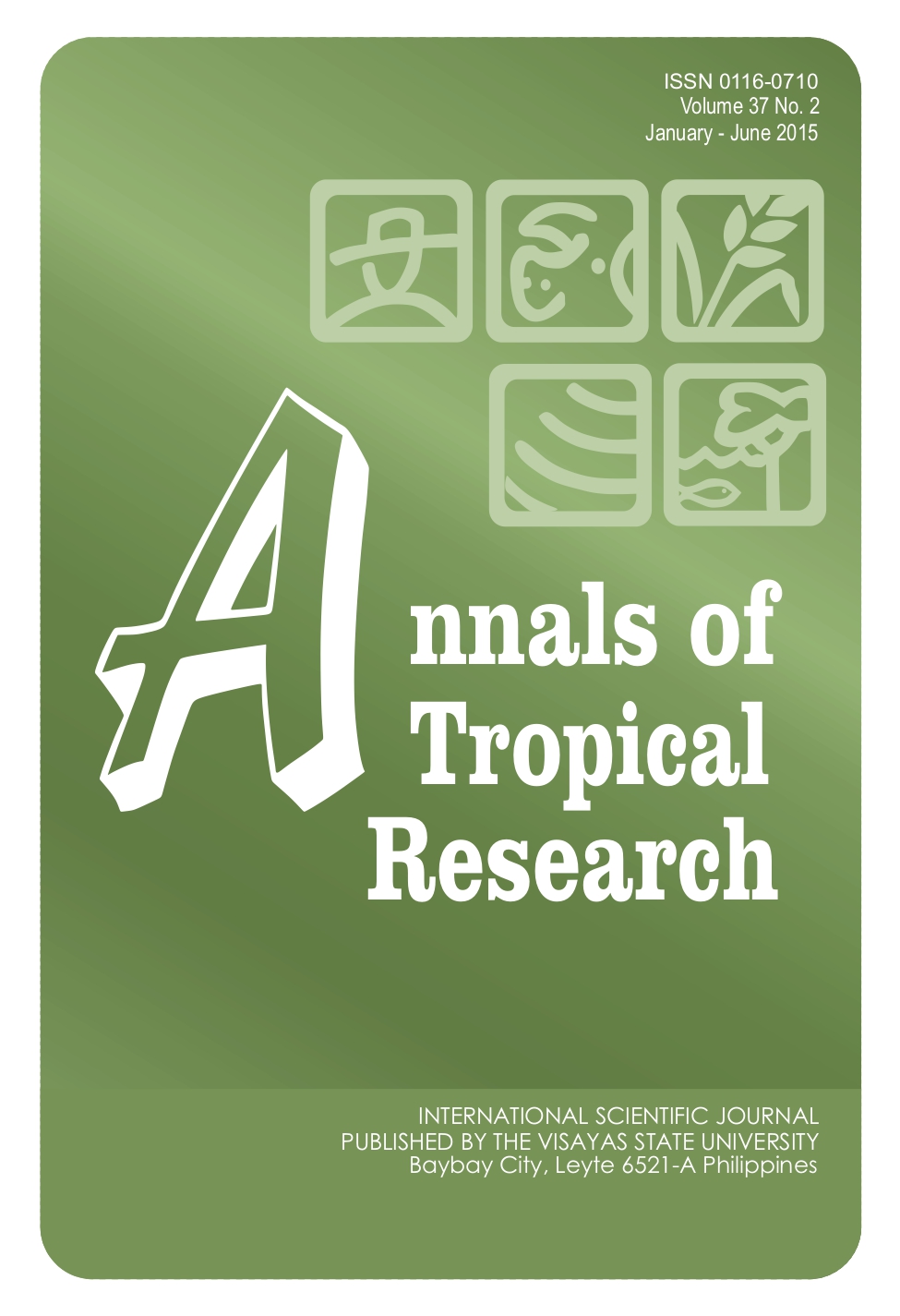Effects of Meloidogyne incognita on the Yield and Quality of Sweet Potato in the Humid Lowlands of Papua New Guinea
DOI:
https://doi.org/10.32945/atr3716.2015Keywords:
Meloidogyne incognita, yield and quality, sweet potato, Papua New Guinea.Abstract
Field experiments were conducted in 2012 and 2013 to study the effects of inoculum densities of Meloidogyne incognita applied at 10, 100, 1000, 5000, and 10000 juveniles/eggs per 500 cm3 along with un- inoculated control treatments, on a susceptible sweet potato variety, K9. At the highest initial inoculum (Pi), an average marketable tuber yield of 991 kg ha-1 was recorded compared to 3495.5 kg ha-1 from un-inoculated control, accounting for 72% relative yield reduction. Significant (p<0.05) yield reduction of 37% was also recorded from the lowest Pi of 10 juveniles/500 cm3. Probit analysis projected that 50% loss to marketable 3 tubers are likely to occur at populations as low as 40 nematodes/500 cm3. There was a high positive correlation (r=0.87**) between percentage relative yield loss and initial inoculum densities.
There was significant (p<0.05) impairment in marketable tuber quality with 4% cracking at 10 M. incognita per 500 cm3, increasing to 37% at the highest Pi of 10,000. Highly significant positive correlations were also observed for cracked tubers (r=0.93**) and non-marketable tubers (r=0.96**), when tested against the Pi densities of M. incognita. Nematode population was monitored during the cropping season revealed an overall significant increase (p<0.05) in juvenile populations at mid-season (60 days after inoculation) from the initial inoculum populations. A reverse in trend of juvenile numbers was observed at harvest (120 DAI).
Downloads
Submitted
Published
How to Cite
Issue
Section
License

This work is licensed under a Creative Commons Attribution-NonCommercial-ShareAlike 4.0 International License.











